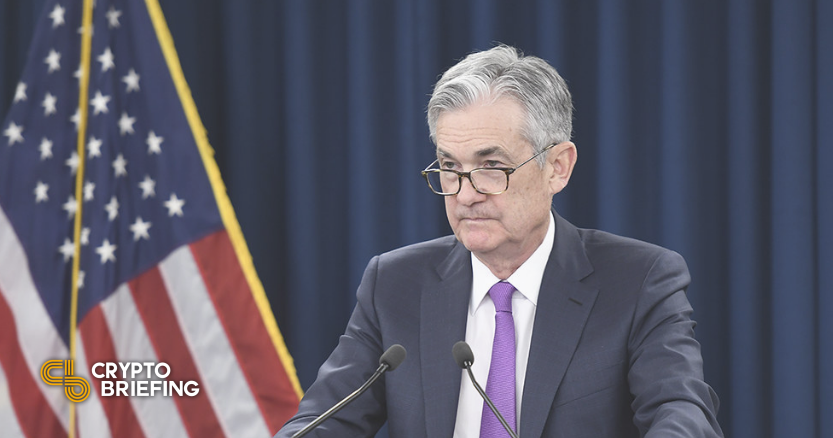Fed Chair Powell Warns of 50 Basis-Point Hike, Recession Risks
Chair Powell warned today of the difficulties associated with slowing growth enough to ameliorate high inflation without throwing the economy into a recession.

Key Takeaways
- Chair Powell has indicated the FOMC's increased willingness to raise interest rates more quickly, noting the possibility for a 50 basis-point hike.
- He also commented on how price stability was one of the Fed's chief mandates, something now difficult to manage without causing a recession.
- Fed Chair Powell has consistently maintained that the Fed would have to be nimble in its monetary policy decisions, and today seems to mark a shift towards greater hawkishness.
Share this article
Chair Jerome Powell has said that the Federal Reserve might do well to raise interest rates more quickly than it has recently. He still maintained the Fed’s view that the economy was strong, but he warned of the Fed’s difficult balancing act of maintaining price stability, while avoiding a recession.
Powell on Monetary Policy
In his final public appearance scheduled before the Federal Open Market Committee meetings of May 3-4, Chair Powell has seemed to shift more hawkish.
In today’s panel hosted by the International Monetary Fund, the Chairman of the Federal Reserve’s monetary policymaking body, the Federal Open Market Committee, Jerome Powell, spoke alongside Christine Lagarde, who is the president of the European Central Bank.
On increasing interest rates, Chair Powell said, “It is appropriate in my view to be moving a little more quickly.” He added his view that the markets’ reactions to the dynamic and shifting nature of monetary policy were reasonable, and he noted the possibility of a 50 basis-point (0.5%) hike in the federal funds rate.
In March, when the Fed raised interest rates for the first time since 2018, Chair Powell tempered the viewpoint of a strongly elevated risk of a recession that many have parroted. However, today he acknowledged the difficult road ahead for the Fed, which is tasked with bringing down inflation without causing a recession: “I don’t think you’ll hear anyone at the Fed say that that’s straightforward or easy. It’s going to be very challenging.”
Of course, maintaining price stability and facilitating maximum employment are the Fed’s primary functions, as mandated by Congress. Therefore, Chair Powell emphasized that price stability was ultimately the Fed’s primary focus, uttering that “economies don’t work without price stability.”
The Fed’s 25 basis-point hike last Month passed 8-1, with the president of the Federal Reserve Bank of St. Louis, James Bullard, voting instead for a 50 basis-point hike, which would have represented the sharpest rate increase implemented by the Fed since 2000. It seems now that more of the Fed’s FOMC voters are in agreement with Bullard. Last week, for example, John Williams, the president of the New York Fed, expressed his support for a 0.5% rate increase come May.
At its March meet, the Fed revised its gross domestic product projections for this year down from 4% to 2.8%, a large decrease but nowhere near levels indicative of a recession. A recession is two consecutive quarters of negative GDP. The FOMC also increased its Federal Funds rate projections for the end of 2022 from 0.9% to 1.9%, which would constitute between seven and eight 25-basis point interest rate increases for the year. The United States’ central bank has not raised rates at consecutive meets since 2006, though the interest-rate futures markets suggest investors are pricing in 0.5% interest rate hikes at both the FOMC’s May and June meetings.
In the leadup to the conclusion of last month’s FOMC meet, Powell indicated a more dovish policy leaning, in part due to the economic uncertainty created by the Russian invasion of Ukraine. Moreover, Mr. Powell also maintained that the Fed viewed inflation as a problem that would peak this year and naturally subside.
Somewhat ominously, Chair Powell separately praised Paul Volcker today, who led the Fed from 1979 to 1987, a period that saw inflation far worse than current levels, and threw the economy into two different recessions when he allowed interest rates of more than 20%. For reference, the current interest rate range is between 0.25% and 0.5%.
Disclosure: At the time of writing, the author of this piece owned BTC, ETH, and several other cryptocurrencies.
